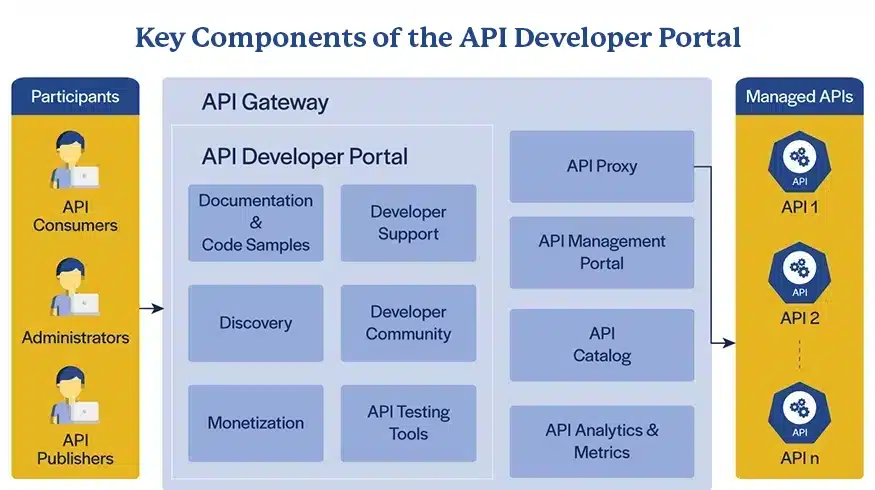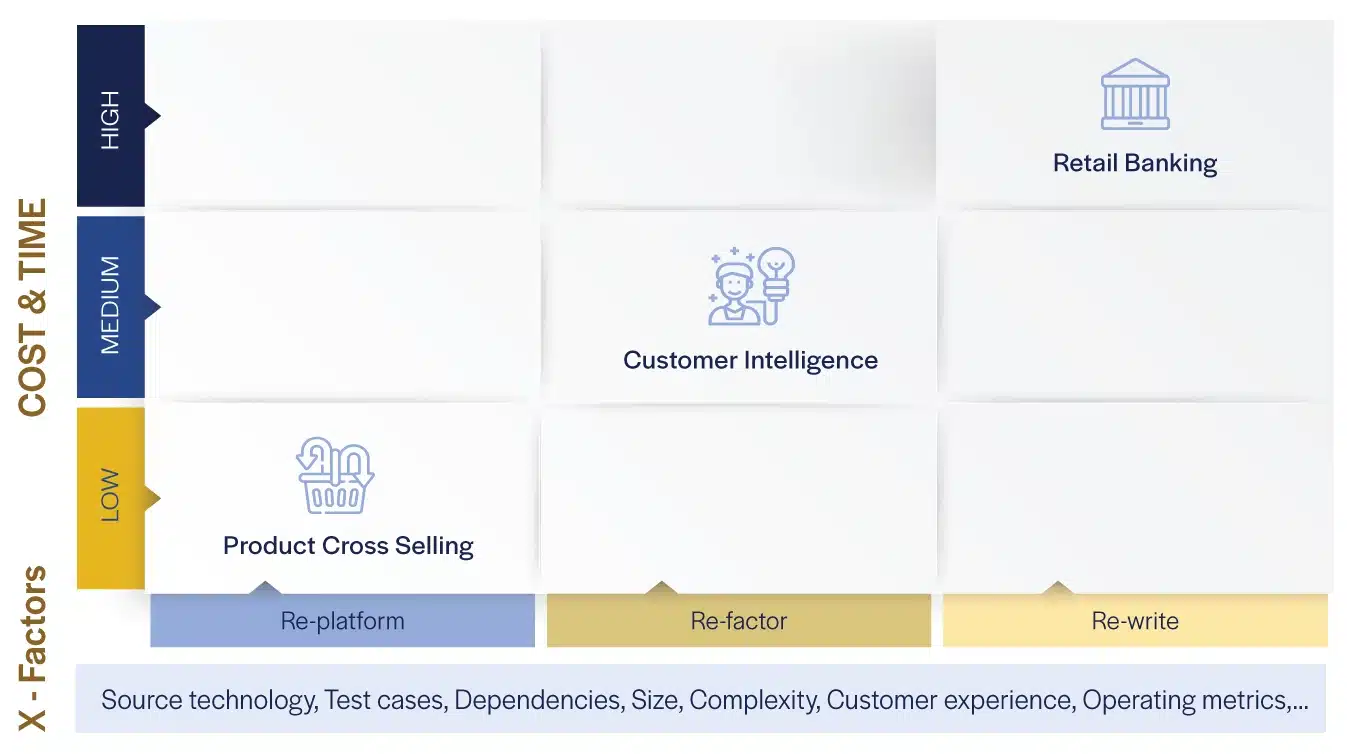

Client
A leading insurance provider specializing in absence management solutions
Goal
Migrate data and services from a legacy platform to FINEOS while ensuring a seamless user experience and improved system reliability
Tools and Technologies
Spring Boot, APIGEE, FINEOS AdminSuite, Splunk
Business Challenge
The client aimed to migrate data and services from its legacy Group Benefits Platform Transformation (GPT) system to FINEOS AdminSuite while maintaining a consistent user interface, improving data accuracy, and ensuring minimal downtime.
The system also required enhanced automation and monitoring to streamline absence creation for agents and employees.

Solution
- Developed APIs to integrate the legacy system with FINEOS AdminSuite for seamless absence management
- Designed an interactive self-service portal, allowing users to efficiently manage absences
- Used Spring Boot for service development and APIGEE for API integration
- Implemented Splunk for real-time monitoring and log analysis to enhance system reliability

Outcomes
- Increased system scalability, reliability, and data accuracy
- Enhanced user experience with a modern, intuitive interface
- Reduced time taken to create absences, improving efficiency for agents and employees
- Faster development cycles and better monitoring, ensuring proactive issue resolution

Our experts can help you find the right solutions to meet your needs.
Streamlining policy administration with low-code development



Client
A leading home insurance enterprise specializing in policy administration solutions
Goal
Develop policy administration applications for partner insurance carriers with seamless third-party and home-grown app integration
Tools and Technologies
Low-Code/No-Code Platform, AWS, Agile Development, Containerization
Business Challenge
The client needed a scalable policy administration solution to support insurance carriers, integrate third-party applications, and enhance policy issuance and settlement.
The goal was to accelerate the go-to-market process for partners and agents while delivering premier services for competitive pricing and superior policy coverage.

Solution
- Designed and developed a policy administration platform using a Low-Code/No-Code application development platform on AWS
- Built three Agile Pod-based teams, each containing five members for rapid iteration and development
- Leveraged containerized development, ensuring each service had its own lifecycle for enhanced flexibility and scalability
- Established weekly release plans with feature flags to enable controlled functionality deployment in production once the business was ready to adopt

Outcomes
- 200% growth in policy issuance
- Faster onboarding for agencies and agents
- Improved efficiency and scalability in policy administration
- Accelerated go-to-market for insurance partners and agents

Our experts can help you find the right solutions to meet your needs.
InsurTech NY 2025 Spring Conference

The annual InsurTech NY Spring Conference is April 2-3, 2025, at Chelsea Piers in New York City. The theme of this year’s forum is InsurTech is the New R&D. The event brings together 900+ leaders and innovators in the industry, including carriers and brokers of life, health and disability, property and casualty (P&C), and specialty insurance; investors; and insurtech service providers like Iris Software. Each year, speakers and attendees focus on the technology and business management solutions that will enhance the operations, customer experience, and revenue streams of insurers.
Meet the leaders of our global InsurTech team - Ravi Chodagam, Vice President, Venkat Laksh and Abhineet Jha, Senior Client Partners - at InsurTech NY’s 2025 Spring Conference. As an integral and long-time technology partner to many top life, P&C, and specialty insurers, Iris has vast experience implementing agile and advanced technology and data solutions that ensure clients stay competitive and ahead of rapidly evolving trends in the dynamic insurance industry.
Discuss your tech priorities with Ravi, Venkat and Abhineet at the Spring Conference, or anytime, and learn how leading insurers apply our solutions in AI and Generative AI, Application Modernization, Automation, Cloud, and Data Science & Analytics to ensure their enterprises are future-ready, scalable, secure, cost-efficient, and compliant. You can also contact the team and learn more about our InsurTech Services here: Insurance Technology Services | Iris Software.
Contact
Our experts can help you find the right solutions to meet your needs.
Get in touchGen AI platform offers future-ready capabilities


BANKING & FINANCIAL SERVICES
Gen AI platform offers future-ready capabilities

Client
A leading North American bank
Goal
Provide a wide range of AI capabilities for various risk and business teams and avoid building fragmented, outdated systems
Tools and Technologies
Amazon Bedrock and Titan V2, pgvector, Faiss, OpenSearch, Llama 7B, Claude Sonnet 3.5 and 3.7
Business Challenge
The Enterprise Risk function at a leading North American bank initiated a Generative AI (Gen AI) solution to offer a wide range of AI capabilities, including document intelligence, summarization, generation, translation, and more.
As the project evolved through proofs of concept and pilots, a key challenge emerged: the risk of creating a fragmented ecosystem with an overwhelming array of unmanageable bespoke solutions, model integrations, and reliance on potentially outdated models and libraries.

Solution
Based on prior engagements across clients, our team delivered thought leadership around how to develop and deliver capabilities using a platform approach. We also set up a Minimum Viable Product Team to iterate on new problem areas and solution approaches. Platform development includes generalized capabilities for:
- Setting up document ingestion pipelines, with choice of parsing approaches, embedding models and vector index stores
- A factory model along with configurations for integrating new parsers, embedding models, LLM interfaces etc., to quickly bring new capabilities to the platform
- User management, SSO integration, entitlements management
- API integration to bring in information/ data from internal and external sources
- Platform support of pgvector, Faiss, OpenSearch, Amazon Titan V2, Llama 7B, Claude Sonnet 3.5, and 3.7, etc.
- Intuitive chat interface for AI Masters - designated business users trained in Prompt Engineering and other techniques to assemble new AI/Gen AI capabilities for users through configuration - and end users

Outcomes
- A future-ready Gen AI platform that can easily incorporate new capabilities and updates
- Multiple specific capabilities, called skills, for use by various risk teams and business users
- A forward-looking roadmap, including ability to compose more complex capabilities using atomic capabilities

Our experts can help you find the right solutions to meet your needs.
Data migration to cloud expedites credit risk functions



Client
A leading North American bank
Goal
Migrate credit risk data and SAS-based analytics models from on-premises data warehouse to AWS to enhance functionality
Tools and Technologies
AWS Glue, Redshift, DataSync, Athena, CloudWatch, SageMaker; Apache Airflow; Delta Lake; Power BI
Business Challenge
The credit risk unit of a major bank aimed to migrate SAS-based analytics models containing data for financial forecasting and sensitivity analysis to Amazon SageMaker.
This was to leverage benefits such as enhanced scalability, improved maintenance for MLOps engineers, and better developer experience. It also sought to migrate credit risk data from a Netezza-based on-premises data warehouse to AWS, utilizing a data lake on AWS S3 and a data warehouse on Redshift to support model migration.

Solution
- Decoupled data workload processing from relational systems using the phased approach with a focus on historical migration, transformational complexities, data volumes, and ingestion frequencies of the incremental loads
- Developed a flexible ETL framework using DataSync for extracting data to AWS as flat files from Netezza
- Transformed data in S3 layers using Glue ETL and moved it to the Redshift data warehouse
- Enabled Glue integration with Delta Lake for incremental data workloads
- Built ETL workflows using Step Functions during orchestration and concurrent runs of the workflow; orchestrated the concurrent runs of workflows using Apache Airflow
- Architected data shift from Netezza to AWS, leveraging a flexible ETL framework

Outcomes
- Enhanced financial forecasting and sensitivity analysis operations with analytical models and data migrated to the AWS public cloud
- Expedited time-to-market catering to client’s downstream consumption needs through Power BI and Amazon SageMaker

Our experts can help you find the right solutions to meet your needs.
Join us at Reuters Pharma USA 2025

Reuters Pharma USA 2025 Conference, noted as North America’s largest cross-functional pharmaceutical gathering, is scheduled between March 18-19, 2025, at the Pennsylvania Convention Center in Philadelphia. With the pharmaceutical industry continually pressured by shifts in market trends and participants, product development, consumer sentiment, and government regulations, attendees and speakers at this Conference will be seeking and sharing insights and strategies to best navigate change, remain competitive, and future-proof operational units as well as global enterprises.
Swarnendu Banerjee, client partner and seasoned IT professional for the pharmaceutical and life sciences sectors, will be attending the Reuters Pharma USA 2025 Conference. He will share Iris’ extensive experience in these domains. How our advanced capabilities in AI/Generative AI, Application Development, Intelligent Automation, Cloud, Data & Analytics, Integrations, and Quality Engineering have delivered successful outcomes in mission-critical engagements, ensuring quality and compliance, reducing costs, enhancing UX, modernizing, migrating, scaling, accelerating, and streamlining.
Connect with Swarnendu at the Reuters Pharma forum or anytime, or visit our Services and Life Sciences capabilities pages to explore our innovative approach and strategies for end-to-end digital transformation.
Contact
Our experts can help you find the right solutions to meet your needs.
Get in touchGen AI interface enhances API productivity and UX



Client
Leading logistics services provider
Goal
Improve API functionality and developer team’s productivity and user experience
Tools and Technologies
Open AI (GPT-3.5 & 4 Turbo LLM), AWS Lambda, Streamlit, Python, Apigee
Business Challenge
A leading logistics provider offers an API Developer Portal as a central hub for managing APIs, enabling collaboration, documentation, and integration efforts, but faces limitations, including:
- Challenges to comprehend schemas, necessitating continued reliance on developers
- No means to individually search for API operations on the API Developer Portal
- Difficulties keeping track of changes in newly-released API versions
- Potential week-long delays as business analysts or product owners must engage developers to check if existing APIs can support new website functionalities

Solution
Integrating Gen AI technology with API, we provided a user-friendly chat interface for business users. Features include:
- Conversational interface for API interaction, eliminating the need for technical expertise to interact directly with APIs
- Search mechanism for API operations, query parameters, and request attributes
- Version comparison and tailored response generation
- Backend API execution according to user query needs

Outcomes
- Business users are now empowered with a chat-based interface for querying API details
- Users can seamlessly explore APIs, streamlining collaboration with the API team and reducing onboarding time to one or two days, ultimately enhancing the customer experience for all stakeholders
- Developer productivity improved with the AI-powered tools in the API Developer Portal
- Functionality is enhanced from the version comparison, individual API operation search, and tailored responses

Our experts can help you find the right solutions to meet your needs.
Meet our team at the AWS Summit in NYC July 2024

Happening at the Jacob Javits Convention Center on the 10th of July, the 2024 AWS Summit New York promises more than 170 sessions on all things cloud and data - from data lake architecture, data governance, data sharing, data engineering and data streaming to machine learning (ML) and ML Ops, data warehouses, business insights and visualization, and data strategy. It also offers interaction with AWS experts, builders, customers, and AWS partners, including Iris Software. All levels of experience – from foundational and intermediate to advanced or expert - can learn and share insights on cloud migration, generative AI, data analytics, as well as industry solutions, challenges and top providers.
An Iris team with extensive and wide-ranging technology and domain experience is attending the Summit. Our professionals are ready and excited to discuss the cloud and data solutions and infrastructure modernization we provide to leading companies across many industries, as well as the advances in emerging tech that we leverage to further aid our clients’ business competitiveness, leadership and digital transformation journeys.
Our Leaders
- Vinodh Arjun, Vice President, Head of Cloud Practice
- Prem Swarup, Vice President, Head of Data & Analytics Practice
- Ravi Chodagam, Vice President, Head of Enterprise Services Sales
Financial Services Client Partners –
Brokerage & Wealth Management; Capital Markets & Investment Banking; Commercial & Corporate Banking; Compliance – Risk & AML; Retail Banking & Payments
Enterprise Services Client Partners -
Insurance, Life Sciences, Manufacturing, Pharmaceutical, Professional Services, Transportation & Logistics
Contact our team to learn more about our innovative approach and advanced technology solutions in AI / ML, Application Development, Automation, Cloud, DevOps, Data Science, Enterprise Analytics, Integrations, and Quality Engineering, which enhance security, scalability, reliability, cost-efficiency, and compliance. Explore how we can add valuable impact to harnessing and monetizing data, optimizing customer experiences, and empowering developers. For more insights, read our Perspective Papers on Cloud Migration Challenges and Solutions and Succeeding in ML Ops Journeys.
Contact
Our experts can help you find the right solutions to meet your needs.
Get in touch
How to win in the API economy with API Developer Portals
In an increasingly API-driven economy, an all-inclusive API Developer Portal can differentiate an enterprise from its competitors.

The evolution and adoption of enterprise digital transformation have made APIs critical for integration within and across enterprises as well as for product/service innovation. As APIs grow in scale and complexity, establishing a developer portal would significantly ease the process of their roll-out and adoption. This perspective paper explores the significance of an API Developer Portal in the modern digital landscape driving the API economy.
A Developer Portal makes it easier to understand APIs, reduces integration time, and supports developers in training and resolving API-related issues. This provides significant business value by improving agility and enhancing customer experience. With the help of a Portal, enterprises can efficiently publish and consume APIs and enable their integration with incremental API versions. This will ensure benefit from all digital investments.
In an increasingly API-driven economy, an all-inclusive API Developer Portal can differentiate an enterprise from its competitors, help build trust with partners, and achieve long-term success. Depending on the API platforms being used, enterprises could adopt a built-in platform or develop a custom one. Developing a custom API Portal would be easy at the start. However, developing enhanced features would entail a significant investment of time and resources. Hence, to make the right decisions and succeed in the broader API implementation/integration journey, a well-thought-out approach is necessary.
To learn more about the key drivers, components and features, implementation options and potential benefits of API Developer Portals, download the perspective paper here.
Contact
Our experts can help you find the right solutions to meet your needs.
Get in touch
Cloud migration challenges and solutions
Insights into the top challenges and their mitigations in the cloud journey.

Selecting an appropriate path for an application or a portfolio of applications is one of the most critical decision points in a cloud journey. Assessing the nature and criticality of an existing application is usually the starting place. Another critical factor to consider is the implementation (migration) cost and time for each path to cloud. The four cloud adoption options are re-host, re-platform, re-factor and re-write in the order of increasing cost, effort, cloud benefits, and TCO reduction. Out of these, re-host usually does not involve code change and is relatively simple.
Mapping cloud operating metrics into a 3x3 matrix is a good starting point on planning for a cloud journey. In this matrix, the cloud operating metrics would move to the right if they are critical for customer intelligence applications; that would be an X factor. Another critical dimension while planning cloud migration is identifying the interface dependencies between selected application(s) and others – both inbound and outbound. These could be synchronous, asynchronous or batch.
Understanding the application architecture, its internal organization, and inter-dependencies are critical before migration. This can be a very complex and labor-intensive task if done manually and can be error prone. Not fully understanding the existing code can lead to issues related to transactions, data corruption, session handling, and performance.
To read more on the top challenges and their mitigations in the cloud journey, download the perspective paper here.
Contact
Our experts can help you find the right solutions to meet your needs.
Get in touchIndustries
Company

Bring the future into focus.

